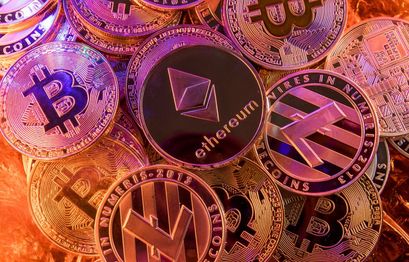Cryptocurrencies and crypto mining are terms that have become as ubiquitous as “stocks” or “bonds” in households around the world. And as virtual currencies become an ever more integral part of our daily lives, it becomes important to understand how they really work.
The process that allows cryptocurrencies to come into existence and then be exchanged for goods and services is powered by crypto mining. Crypto mining is an essential activity without which most virtual currencies would simply not exist.
But what exactly is crypto mining? How does it work? And why do people even bother doing it? Here are answers to the most common questions asked about crypto mining.
Question #1: What exactly is crypto mining?
The best way to understand crypto mining is by looking at another real-world process. When you transfer money from your bank account to another account, it is the bank that processes the transaction. The bank’s computer servers verify your identity, process the transaction, and record it. In the world of cryptocurrencies, something similar happens in a decentralized way. Instead of a bank recording, processing, and verifying a transaction, it is a worldwide network of computers that do it. These computers are the crypto “miners.”
The main advantage of this system is the decentralization. Mining computers can be owned by anyone, anywhere, and all they require is electricity and an internet connection. Turning your computer into a mining computer is as simple as downloading some free software and linking your computer to the global network. Obviously, professional miners optimize their computers and use the best hardware to mine at a much higher rate than a normal desktop can. But with the right technical know-how, anyone can do it. The resulting decentralization means that no one person has the final say, and the group of miners collectively manages the network.
Question #2: What role does mining play in cryptocurrencies?
From the previous answer, we can already begin to see how mining is a critical component of the cryptocurrency machine. Without miners, there would be no computers to verify, process, and record transactions. As you can imagine, some of the larger cryptocurrencies might have thousands of transactions happening each second. In order to ensure that these transactions happen smoothly, it requires a large number of miners that are continuously processing and recording transactions. If there are not enough miners, the cryptocurrency network can slow down. A transaction might take a long time to get processed, and this sometimes happens with some of the larger cryptocurrencies.
Question #3: What are the computers actually doing?
What the computers are doing is verifying and recording transactions on a public ledger, which is called the “blockchain.” Every computer (i.e. miner) on the network has access to this ledger. And because the process of mining involves a fair bit of computation and conversions, a lot of computing power is needed. Miners all around the world continuously do these computations to keep the system moving.
Question #4: Who pays these miners?
By now, you should have a good idea about what miners do and why they are necessary. But the next big question is why do it in the first place? What do the miners get out of it?
The miners get compensated in two ways:
First, they receive a transaction fee. When someone wants to perform a transaction with a cryptocurrency, they have to pay a small fee for the transaction to go through. This amount is then distributed among the miners based on a ratio of their efforts.
Second, miners receive a mining reward. For fiat currencies, like the U.S. dollar, the Federal Reserve “prints” more money as the economy grows and populations increase. Similarly, in the crypto world, this process of “printing” more money happens through miners. In addition to the transaction fee, the miners also get some additional reward based on their contributions — and this reward is actually new cryptocurrency that is coming into being. This is where the term “mining” comes from.
Question #5: Can anyone mine cryptocurrencies?
When crypto mining first started, it was mostly done in dorm rooms, garages, basements, or spare bedrooms. Over time, mining has matured considerably, and there are now large mining facilities that use thousands of mining chips and cards to mine on an industrial scale. For some of the larger currencies, like Bitcoin, it has become difficult for small-scale miners to make a decent profit.
However, many other smaller cryptocurrencies can still be mined at home or on a smaller scale by the general public and yield a reasonable ROI. The profit margins will be lower because small operations won’t have the economies of scale, access to cheap electricity, or bulk hardware discounts that the big players do. But it’s still viable and profitable to mine some currencies at home.
Question #6: What’s the future of crypto mining?
As the popularity of cryptocurrencies and their contribution to the global economy increases, so does the competitiveness of the crypto mining industry. We are at a point now where large institutional investors have started pouring money into cryptocurrencies, both directly and through mining facilities. Even small-scale miners are trying to stay ahead of the curve by investing in the latest hardware and trying to optimize their operations by reducing their electricity costs and squeezing the most out of their hardware.
The future will definitely see mining happening in an even more organized and centralized manner because that efficiency directly translates to the bottom line of the miners. Either way, the future of crypto mining is trending toward increased efficiency and less wastage.










